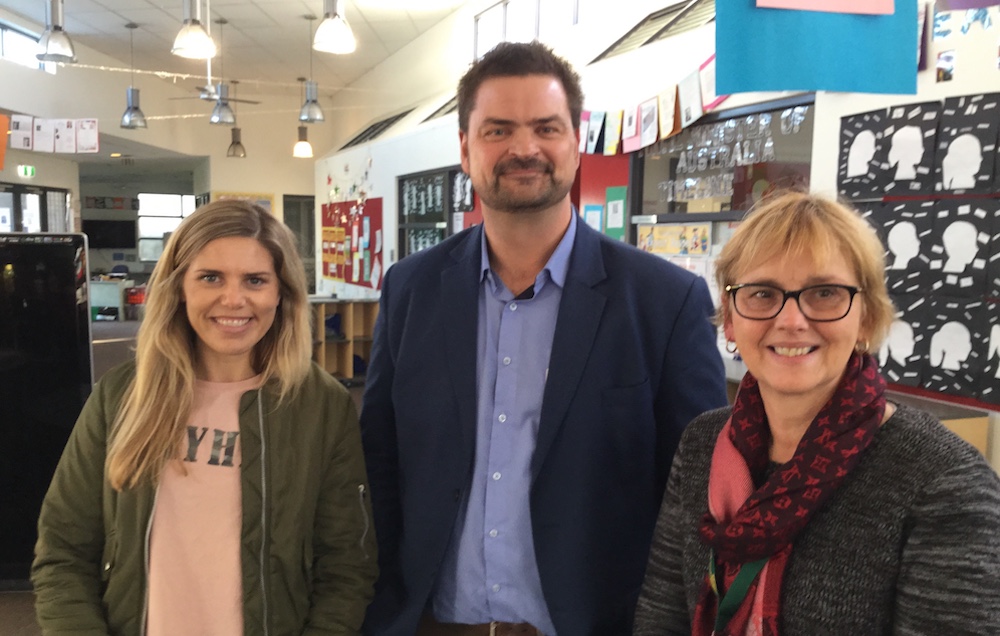Australia’s Chief Scientist, Dr Cathy Foley, on being Dyslexic
Did you know that between 5 and 10% of your class are likely to have dyslexia? In every class of 30, between 1 and 3 students will have a learning disability characterised by difficulties with word recognition, spelling and decoding abilities. Australia’s Chief Scientist, Dr Cathy Foley, was one of those children.

As Australia’s Chief Scientist, Dr Cathy Foley has a responsibility to provide advice to the government on matters relating to science, technology and innovation. Prior to her appointment to science’s top job, she worked at CSIRO for over three decades, her research work ranging from semiconductor materials to quantum technologies. Before that, she undertook a PhD in physics.
Before that, when she was in high school, she was diagnosed with dyslexia.
“I was really bad at spelling and writing and my reading wasn’t strong,” Dr Foley says. “My handwriting was a mess, ink smudges across the page. I wasn’t thinking about being a scientist. At that stage, girls were nuns or mothers, nurses or secretaries, so the idea of being a scientist wasn’t even on the radar.”
As a teenager, Cathy wanted to change the world, so she had planned on being a teacher, as she says “a very eminent and important profession.” But she was challenged by her lecturer to pursue science instead of education, to enrol in Honours and then a PhD. She’d always had a love for experimenting. “At the back of the garage my dad had a workshop with lots of tools and I loved making things… in the school holidays we used to get up to the most atrocious things,” she remembers. “Try things out and experiment – that’s always been part of my headspace, and I think that’s where the dyslexia comes in, because if you’re not good at spelling and writing, you have to do things that are ‘outside yourself’… so it honed those extra skills.”
Dyslexia is a neurological condition that relates to how the brain processes information. Because you never ‘grow out’ of dyslexia, but can learn to manage some of the challenges over time, it means that as adults there are certain strengths of the condition that distinguish people with dyslexia from neurotypicals.
According to a research paper released by the University of Bolton (UK)1, some of these strengths can come in the following areas:
- High-level reasoning and visual-spatial abilities
- Memory and problem solving
- Creativity
- Interpersonal strengths such as curiosity, empathy, energy, divergent thinking and exceptional memory
- Determination and resilience.
For Dr Foley, one of the strengths that have come with her dyslexia is commonly referred to as out-of-the-box or non-linear thinking: “one of the things I’ve noticed is that I have a high level of intuition because when you’re dyslexic, it means you’re quite aware of the world around you, and you notice things; your senses are more highly tuned. As a consequence, I make connections that people hadn’t thought of before, so I pull together different ideas which are seemingly disconnected and bring them together, and come up with a really different way of looking at things. I think that’s what has been a real advantage for me”.
Non-linear thinking is fast becoming recognised as a highly valued trait, with well-known dyslexic Richard Branson recently promoting LinkedIn’s new ‘skill’ dyslexic thinking which members can now list in their professional profiles. Having team members – and classmates – who view the world differently is one way of broadening everyone’s perspective, which as Dr Foley believes, is essential if we are to find solutions to the challenges the world is facing.
“One of the things we need to understand is that everyone’s got something to bring to humanity. And we’re seeing that more and more that people who have disabilities are just saying ‘no, I’m just differently abled’ and that does bring something different, and it comes back to embracing humanity. We are – as the human race – only as good as the breadth of perspectives, and if you’ve got people who have differences and bring a different perspective, [this] means we’re going to solve more problems. It’s the same with science; when we bring everyone together and respect and recognise that everyone has something to bring — that we listen to them and make ways to accommodate them — that’s when we start to see something magical happen.”
School is commonly a difficult time for children with dyslexia as they don’t always fit the mould of ‘normal’ and don’t always respond to the same teaching styles as other children. But what can teachers do to help? Dr Foley says it is important not to “get caught up with what classic ‘success’ looks like. Think creatively of solutions, especially since digital tools are so widely available now. Look at how you can support kids in other ways… amplify the things they are good at.”
As Australia’s Chief Scientist, she also implores teachers to remember that science and creativity are one and the same. “The understanding of what it means to change the world, to affect or impact… it’s the same for creativity too. People think if they want to be creative, they need to be an artist or in the humanities, but science and art are closely aligned: imagination is where it all starts from.”
October is Dyslexia Awareness Month.
Reference:
- Kannangara, C., Carson, J., Puttaraju, S., and Allen R. (2018) Not All Those Who Wander are Lost: Examining the Character Strengths of Dyslexia, Global Journal of Intellectual and Developmental Disabilities, 4(5).
Related article: Dr Foley for Science Week: INTERVIEW: The “realisation” that needs to happen this Science Week, according to Dr Cathy Foley – SchoolNews – Australia (school-news.com.au)







